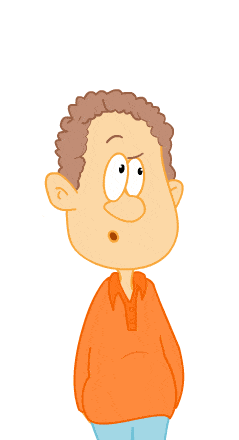19 Mar How to Change Your Child’s Thoughts From Unhelpful to Helpful

As a parent or caregiver you can help your child feel good about himself in uncomfortable situations which may be encountered on a daily basis, in school, at home and on the playground. For example, your child is at school in the lunchroom. Someone he knows walks past him and doesn’t say hello. Your child thinks, “He always ignores me.” or “He doesn’t like me.” How does this thought make him feel? Let’s suppose this thought makes him feel angry. What will he do? Maybe the next time, he will ignore the person or perhaps, when he comes home, he will slam the door and stay in his room all night. This is an example of an upsetting situation that affects your child and you.
What might you do? You may try to comfort your child by saying such things as: “Don’t worry everything will be o.k.”, “Next time, avoid him” or you may use adult logic your child isn’t able to yet understand; but nothing works.
What if we told you that there is a better way to handle such situations? With a basic understanding of cognitive behavioral principles you can help your child get through situations such as the one described above.
You may be asking yourself: “What are cognitive behavioral principles? Based upon extensive research and wide acceptance from mental health providers, cognitive behavioral principles suggest that thought, feeling and behavior are connected. For example, your child believes that he got the worst grade in the class, which may lend itself to his feeling sad. In turn, this may result in his putting his head down on his desk, thus having the teacher and classmates wonder what’s wrong.
Now, let’s look at the child’s thought in the above example. If you recall, the child thinks, “I got the worst grade in the class”. This thought resulted in his feeling sad and putting his head down on the desk and leaving everyone around him wondering what’s wrong. What if instead he thought, “If I didn’t do well this time, next time, I’ll study harder”. He may feel hopeful which may lend itself to his participating more in class.
What changed? The boy in this latter scenario thought in a more reasonable, objective manner. According to Dr. David Burns, researcher and author in the mental health field, many of us are guilty of unreasonable or irrational thoughts. Dr. Burns offered an insightful and sophisticated list of unhelpful thoughts that he labeled cognitive distortions.
On Second Thought has adapted the principles of cognitive behavior and has presented them in a kid friendly way by researching thousands of idioms and found those that most closely match those cognitive distortions. We named the list: Busto & Busto’s Iffy Thoughts (a.k.a. unhelpful thoughts). Going a step further, your child is given the opportunity to challenge these Iffy Thoughts. This required further research of idioms. We named this list Witty Thoughts (a.k.a. helpful thoughts).
Note: Becoming aware of unhelpful thoughts and then challenging them will not happen overnight. To this end, it is important for those involved to reinforce the principles outlined in this program as often as possible.
How do you reinforce the principles in this program?
1. set aside a time when you can talk with your child and do the activities. Don’t try to do too many activities at once.
2. apply these principles in your daily conversations with your child to help him internalize these principles
3. make this a family activity. Remember it’s difficult for your child to think differently when everyone else around him remains the same. After a while the whole family may be speaking in idioms
4. finally, if you so desire, you may go to website (onsecond-thought.com) and order a set of playing cards and download instructions for further reinforcement for the whole family in a fun and lighthearted way.
On Second Thought: From Iffy to Witty Thoughts is a skill-building program intended for all children ages 8-12. However, some children may have more difficulty letting go of their unhelpful thoughts. In such cases, it may be beneficial to consult with a therapist who would be able to provide you and your child with additional support and guidance.




